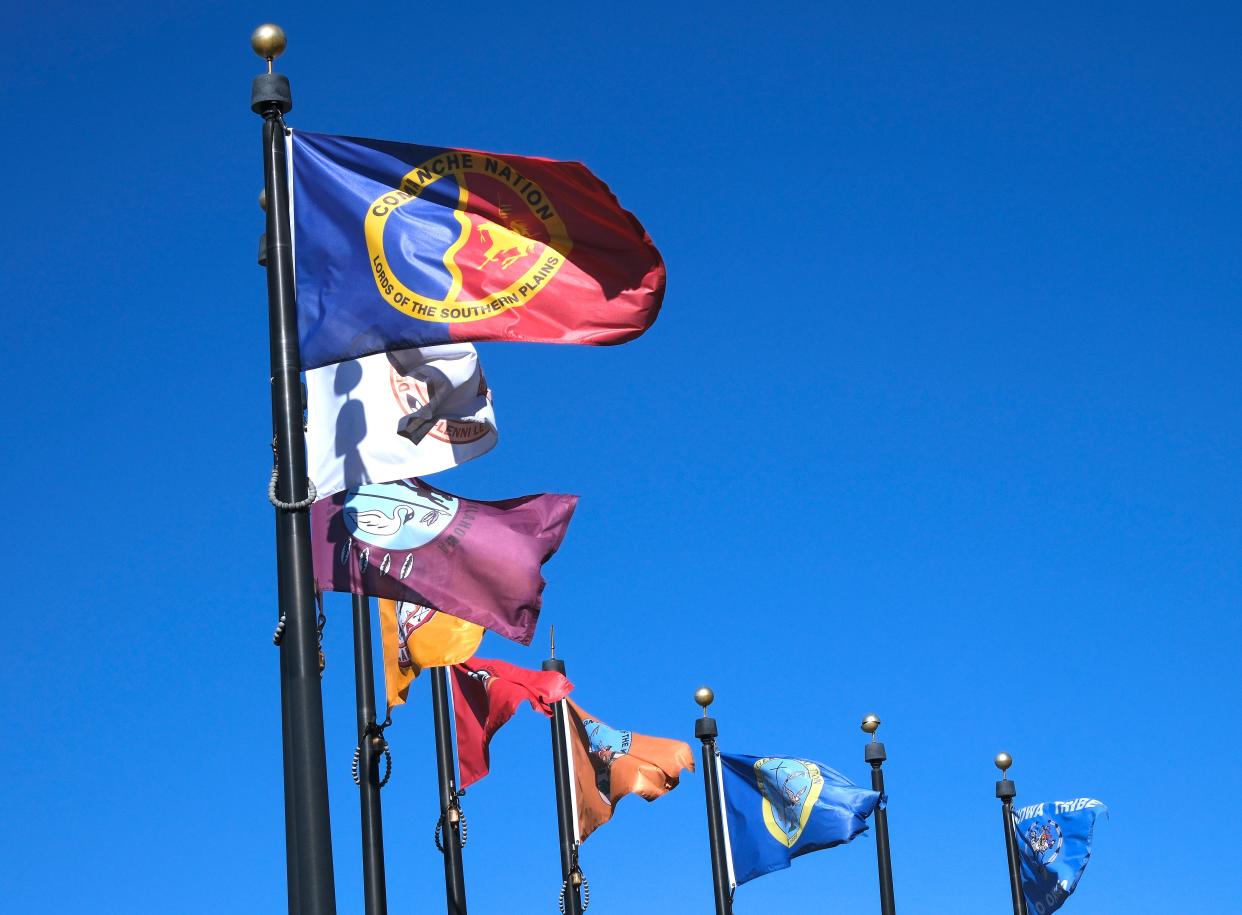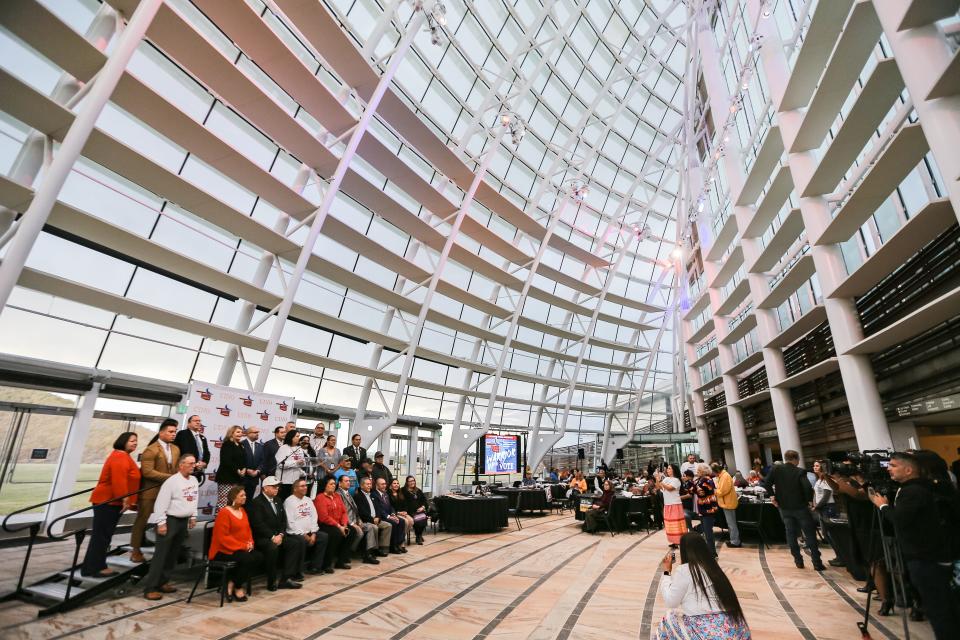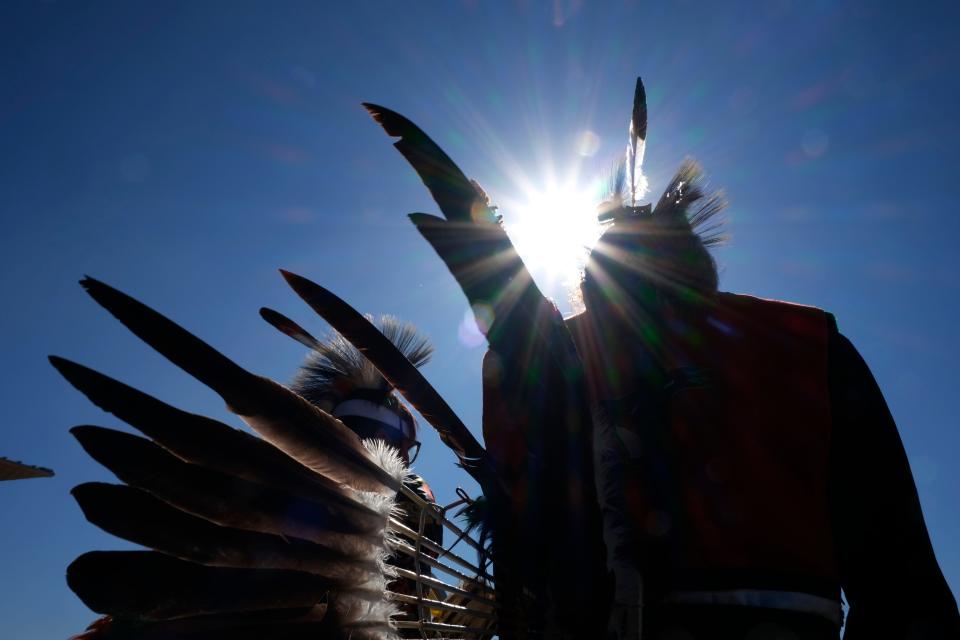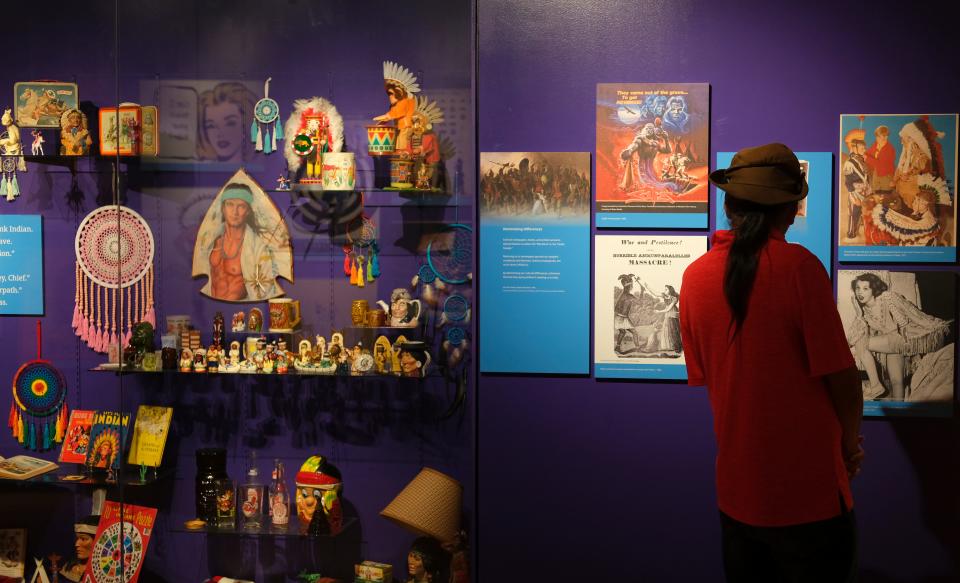Native American Heritage Day and Month: Here's everything you need to know

Many people know the day after Thanksgiving as Black Friday. But the federal government officially recognizes the day in a much different way: as Native American Heritage Day.
The day marks the final week of National Native American Heritage Month and is meant to celebrate the cultures and contributions of Indigenous people in the United States.
The day has particular significance in Oklahoma, which is home to 39 tribal nations. One in six Oklahomans identified as Native American in the 2020 census. That amounts to the largest share of residents in any state except Alaska.
U.S. lawmakers proposed the day as a way to encourage schools to teach about Native American history and promote working relationships between federal and tribal governments.
Many Native people say those goals should last all year long, especially as legislators in Oklahoma and other states seek to limit how schools teach about race. Some people worry students won’t learn about harmful U.S. policies toward tribal nations, such as government-funded boarding schools that sought to assimilate Native students for generations.
More: 8 new Native American shows and movies you can stream now — and 3 coming soon
President Joe Biden acknowledged that complicated past in an Oct. 31 proclamation recognizing November as Native American Heritage Month.
“Since time immemorial, Native communities have passed down rich cultures, knowledge, traditions, and ways of life,” Biden said. “But throughout our history, Native peoples’ cultures, identities, and governments were not always seen as a part of this Nation but as a threat to it.”
Despite enduring centuries of violence and oppression, Native people have made contributions that are essential to the fabric of the United States, Biden said.
“Their diverse cultures and communities continue to thrive and lead us forward,” he said.
What is the history of Native American Heritage Day and Month?
It all started as Native American Awareness Week in October 1976.
President Gerald Ford proclaimed the week at the urging of Congress, as one of many events in honor of the 200th birthday of the United States. The 1970s also marked a critical turning point in federal policy toward tribal nations, from a focus on terminating their rights to acknowledging them.
More: Oklahoma tribes celebrate Thanksgiving despite holiday's false narrative
“The culture and heritage of our Native Americans are unique,” Ford wrote in his proclamation. “In renewing the spirit and determined dedication of the past 200 years, we should also join with our Native Americans in rebuilding an awareness, understanding and appreciation for their historical role and future participation in our diverse American society.”
Many other presidents went on to issue similar proclamations. George H.W. Bush was the first president to proclaim a full month in recognition of Native Americans in 1990, signing off on a Congressional resolution.
His son, President George W. Bush, approved a similar resolution in 2008 to create a standalone Native American Heritage Day. President Barack Obama made the day a permanent fixture on federal calendars the following year.

More: When was the first Thanksgiving hosted?
What is the purpose of Native American Heritage Day?
Congress explained the reasons for a permanent Native American Heritage Day in a resolution passed in 2009, which became law.
The resolution calls on governments, civic groups, schools and others to honor the historical and present-day cultures, traditions and accomplishments of Native Americans.
“Nationwide recognition of the contributions that Native Americans have made to the fabric of American society will afford an opportunity for all Americans to demonstrate their respect and admiration of Native Americans for their important contributions to the political, cultural, and economic life of the United States,” the resolution said.

What is the difference between Indigenous Peoples’ Day and Native American Heritage Day?
More states are starting to recognize Indigenous Peoples’ Day on the second Monday of October in place of Columbus Day. The federal government has not officially made the switch, although Biden has issued proclamations in support of Indigenous Peoples’ Day.
Supporters of the change say Columbus Day erroneously honors Christopher Columbus for “discovering” the Americas, when millions of Indigenous people already lived on those lands.
Columbus Day fell in the middle of the federal government’s first Native American Awareness Week in 1976. But that doesn’t appear to have ever happened again. All of the subsequent weeks honoring Native Americans have occurred in November or December.
More: Five things to know about Indigenous Peoples’ Day in the U.S.
What is the history of days honoring Native Americans in Oklahoma?
Oklahoma has had an official day honoring Native Americans since 1998. Lawmakers approved a law that year declaring the third Monday in every November to be Native American Day.
State officials celebrated the first-ever Native American Day with an event outside of the legislative chambers in the Oklahoma Capitol, according to The Oklahoman archives.
In 2019, lawmakers voted to move the date to coincide with Columbus Day, after hearing from many tribal leaders whose nations already recognized Indigenous Peoples Day. Gov. Kevin Stitt signed the change into law.

What to do for Native American Heritage Day and Month in Oklahoma
There is no shortage of ways to find out about Native American cultures, tribal nations and how they have shaped Oklahoma. The learning can continue all year long. Here are a few suggestions to get you started.
Visit cultural centers, museums
Explore one of the expansive cultural centers or museums operated by tribes across the state. Options abound, including the Comanche National Museum and Cultural Center in Lawton, Citizen Potawatomi Cultural Heritage Center in Shawnee and Chickasaw Cultural Center in Sulphur.
Another great option is the First Americans Museum in Oklahoma City, which features perspectives from all of the 39 tribes based in the state.
Hours of each location vary.
Read Indigenous works
Make your next book one by an Indigenous author. Some picks include:
The contemporary fiction book “Calling for a Blanket Dance” by Cherokee and Kiowa author Oscar Hokeah.
The classic “House Made of Dawn” by Kiowa author N. Scott Momaday.
“The Deaths of Sybil Bolton,” a personal investigation into the Osage Reign of Terror by Osage author Dennis McAuliffe.
Watch
Check out a movie or documentary told from an Indigenous perspective. The National Museum of the American Indian’s annual Native Cinema Showcase is streaming online through Friday at americanindian.si.edu/native-cinema-showcase-2023/
This article originally appeared on Oklahoman: Native American Heritage Day 2023: What to know, how it started

